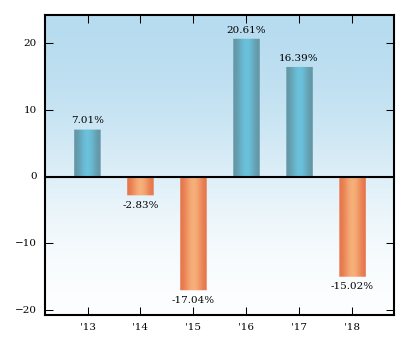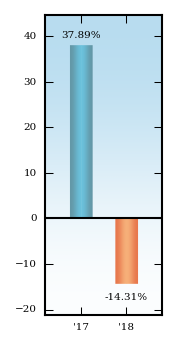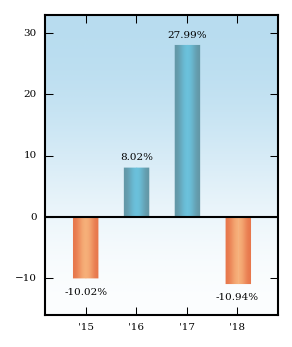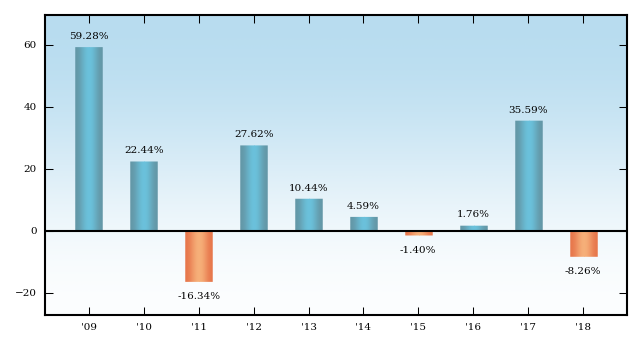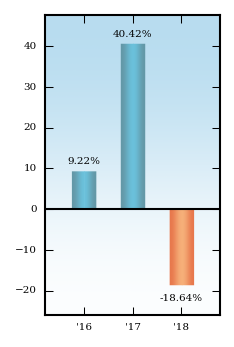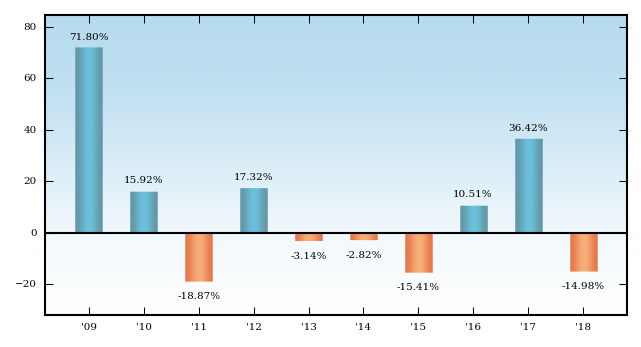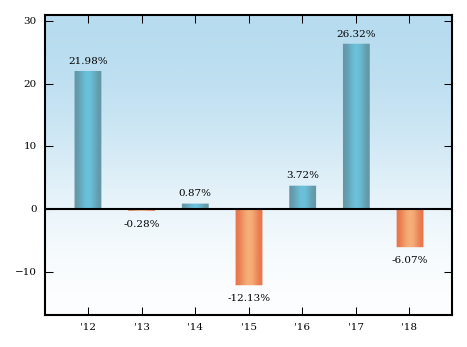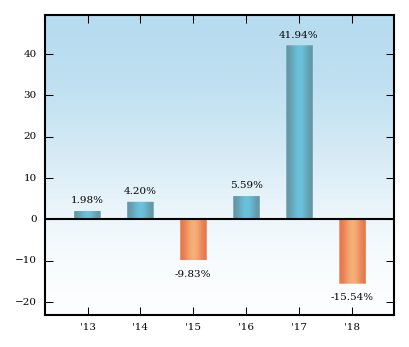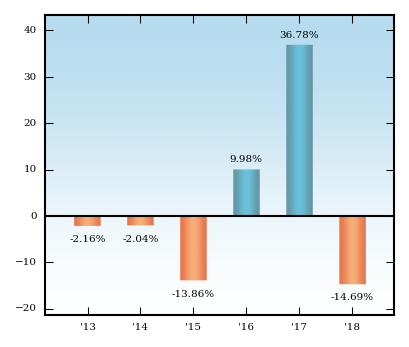| Label |
Element |
Value |
| Risk/Return: |
rr_RiskReturnAbstract |
|
|
| Registrant Name |
dei_EntityRegistrantName |
iShares, Inc.
|
|
| Prospectus Date |
rr_ProspectusDate |
Jan. 31, 2020
|
|
| iShares Edge MSCI Multifactor Emerging Markets ETF |
|
|
|
| Risk/Return: |
rr_RiskReturnAbstract |
|
|
| Risk/Return [Heading] |
rr_RiskReturnHeading |
iSHARES® EDGE MSCI MULTIFACTOR EMERGING MARKETS ETF Ticker: EMGF Stock Exchange: Cboe BZX
|
|
| Objective [Heading] |
rr_ObjectiveHeading |
Investment Objective
|
|
| Objective, Primary [Text Block] |
rr_ObjectivePrimaryTextBlock |
The iShares Edge MSCI Multifactor Emerging Markets ETF (the “Fund”) seeks to track the investment results of an index composed of stocks of large- and mid-capitalization companies in emerging markets that have favorable exposure to target style factors subject to constraints.
|
|
| Expense [Heading] |
rr_ExpenseHeading |
Fees and Expenses
|
|
| Expense Narrative [Text Block] |
rr_ExpenseNarrativeTextBlock |
The following table describes the fees and expenses that you will incur if you own shares of the Fund. The investment advisory agreement between iShares, Inc. (the “Company”) and BlackRock Fund Advisors (“BFA”) (the “Investment Advisory Agreement”) provides that BFA will pay all operating expenses of the Fund, except the management fees, interest expenses, taxes, expenses incurred with respect to the acquisition and disposition of portfolio securities and the execution of portfolio transactions, including brokerage commissions, distribution fees or expenses, litigation expenses and any extraordinary expenses. The Fund may incur “Acquired Fund Fees and Expenses.” Acquired Fund Fees and Expenses reflect the Fund's pro rata share of the fees and expenses incurred by investing in other investment companies. The impact of Acquired Fund Fees and Expenses is included in the total returns of the Fund. Acquired Fund Fees and Expenses are not included in the calculation of the ratio of expenses to average net assets shown in the Financial Highlights section of the Fund's prospectus (the “Prospectus”). BFA, the investment adviser to the Fund, has contractually agreed to waive a portion of its management fees in an amount equal to the Acquired Fund Fees and Expenses, if any, attributable to investments by the Fund in other series of iShares Trust and the Company through December 31, 2021. The contractual waiver may be terminated prior to December 31, 2021 only upon written agreement of the Company and BFA.
You may also incur usual and customary brokerage commissions and other charges when buying or selling shares of the Fund, which are not reflected in the Example that follows:
|
|
| Operating Expenses Caption [Text] |
rr_OperatingExpensesCaption |
Annual Fund Operating Expenses (ongoing expenses that you pay each year as a percentage of the value of your investments)
|
|
| Fee Waiver or Reimbursement over Assets, Date of Termination |
rr_FeeWaiverOrReimbursementOverAssetsDateOfTermination |
December 31, 2021
|
|
| Portfolio Turnover [Heading] |
rr_PortfolioTurnoverHeading |
Portfolio Turnover.
|
|
| Portfolio Turnover [Text Block] |
rr_PortfolioTurnoverTextBlock |
The Fund and the underlying funds in which the Fund may invest a portion of its assets, the iShares MSCI India ETF and/or the iShares India 50 ETF (each, an “Underlying Fund,” and together, the “Underlying Funds”), may pay transaction costs, such as commissions, when they buy and sell securities (or “turns over” their portfolios). A higher portfolio turnover rate for the Fund or the Underlying Funds may indicate higher transaction costs and may cause the Fund or the Underlying Funds to incur increased expenses. These costs, which are not reflected in the Annual Fund Operating Expenses or in the Example (except costs to the Underlying Funds included as part of Acquired Fund Fees and Expenses), affect the Fund’s performance. During the most recent fiscal year, the Fund's portfolio turnover rate was 53% of the average value of its portfolio. To the extent the Underlying Funds incur costs from high portfolio turnover, such costs may have a negative effect on the performance of the Fund.
|
|
| Portfolio Turnover, Rate |
rr_PortfolioTurnoverRate |
53.00%
|
|
| Expense Exchange Traded Fund Commissions [Text] |
rr_ExpenseExchangeTradedFundCommissions |
You may also incur usual and customary brokerage commissions and other charges when buying or selling shares of the Fund, which are not reflected in the Example that follows:
|
|
| Expenses Not Correlated to Ratio Due to Acquired Fund Fees [Text] |
rr_ExpensesNotCorrelatedToRatioDueToAcquiredFundFees |
Acquired Fund Fees and Expenses are not included in the calculation of the ratio of expenses to average net assets shown in the Financial Highlights section of the Fund's prospectus (the “Prospectus”).
|
|
| Expense Example [Heading] |
rr_ExpenseExampleHeading |
Example.
|
|
| Expense Example Narrative [Text Block] |
rr_ExpenseExampleNarrativeTextBlock |
This Example is intended to help you compare the cost of owning shares of the Fund with the cost of investing in other funds. The Example assumes that you invest $10,000 in the Fund for the time periods indicated and then sell all of your shares at the end of those periods. The Example also assumes that your investment has a 5% return each year and that the Fund’s operating expenses remain the same. Although your actual costs may be higher or lower, based on these assumptions, your costs would be:
|
|
| Strategy [Heading] |
rr_StrategyHeading |
Principal Investment Strategies
|
|
| Strategy Narrative [Text Block] |
rr_StrategyNarrativeTextBlock |
The Fund seeks to track the investment results of the MSCI Emerging Markets Diversified Multiple-Factor Index (the “Underlying Index”), which has been developed by MSCI Inc. (the “Index Provider” or “MSCI”). The Underlying Index is designed to select equity securities from the MSCI Emerging Markets Index (the “Parent Index”) that have high exposure to four investment style factors: value, quality, momentum and low size, while maintaining a level of risk similar to that of the Parent Index. The Underlying Index is also constrained in its construction to limit turnover and extreme exposures to particular sectors, countries, component weights or other investment style factors.
MSCI, in selecting equity securities from the Parent Index, assigns a composite score for a security through a proprietary model based on four equally weighted investment style factors. The value score is calculated from a company's valuation ratios (e.g., forward and trailing earnings to share price, cash earnings to share price, book value to share price and enterprise value to earnings before interest & taxes (EBIT)); the quality score is calculated from a company's underlying metrics (e.g., profitability metrics (asset turnover, gross profitability, gross margin and return-on-assets), investment quality metrics (total assets growth rate, issuance growth and capital expenditure growth), leverage ratios (market leverage, book leverage and debt-to-assets) and earnings variability (measured by volatility of earnings, cash flow, sales, and forward share price to earnings estimates)); the momentum score aims to measure a security's sustained relative performance against the global market over a two-year period and against other securities based in the same country over the previous 12 months (with a one month lag); and the low size score seeks to measure the market capitalization of a company as compared to other companies based in the same country.
As of August 31, 2019, the Underlying Index consisted of approximately 214 companies from the following 21 countries: Argentina, Brazil, Chile, China, Czech Republic, India, Indonesia, Malaysia, Mexico, Peru, the Philippines, Poland, Qatar, Russia, Saudi Arabia, South Africa, South Korea, Taiwan, Thailand, Turkey and the United Arab Emirates. The Underlying Index will include large- and mid-capitalization companies and may change over time. As of August 31, 2019, a significant portion of the Underlying Index is represented by securities of companies in the consumer discretionary, financials and information technology industries or sectors. The components of the Underlying Index are likely to change over time.
In seeking to track the investment results of the Indian securities included in the Underlying Index, the Fund may invest a portion of its assets in the Underlying Funds.
BFA uses a “passive” or indexing approach to try to achieve the Fund’s investment objective. Unlike many investment companies, the Fund does not try to “beat” the index it tracks and does not seek temporary defensive positions when markets decline or appear overvalued.
Indexing may eliminate the chance that the Fund will substantially outperform the Underlying Index but also may reduce some of the risks of active management, such as poor security selection. Indexing seeks to achieve lower costs and better after-tax performance by aiming to keep portfolio turnover low in comparison to actively managed investment companies.
BFA uses a representative sampling indexing strategy to manage the Fund. “Representative sampling” is an indexing strategy that involves investing in a representative sample of securities that collectively has an investment profile similar to that of an applicable underlying index. The securities selected are expected to have, in the aggregate, investment characteristics (based on factors such as market capitalization and industry weightings), fundamental characteristics (such as return variability and yield) and liquidity measures similar to those of an applicable underlying index. The Fund may or may not hold all of the securities in the applicable Underlying Index.
The Fund generally will invest at least 90% of its assets in the component securities of the Underlying Index and in investments that have economic characteristics that are substantially identical to the component securities of the Underlying Index (i.e., depositary receipts representing securities of the Underlying Index) and may invest up to 10% of its assets in certain futures, options and swap contracts, cash and cash equivalents, including shares of money market funds advised by BFA or its affiliates, as well as in securities not included in the Underlying Index, but which BFA believes will help the Fund track the Underlying Index.
The Fund may invest all of its assets that are invested in India through a wholly-owned subsidiary located in the Republic of Mauritius or indirectly through a wholly-owned Mauritius subsidiary of an Underlying Fund (each, a “Subsidiary”). BFA serves as investment adviser to both the Fund, the Underlying Funds, and each Subsidiary. Unless otherwise indicated, the term “Fund,” as used in this Prospectus, means the Fund, the Underlying Fund and/or each Subsidiary, as applicable. The term “the Subsidiary” as used in this Prospectus, unless otherwise indicated, includes the Subsidiary of each Underlying Fund, as applicable. The Fund seeks to track the investment results of the Underlying Index before fees and expenses of the Fund.
The Fund may lend securities representing up to one-third of the value of the Fund's total assets (including the value of any collateral received).
The Underlying Index is sponsored by MSCI, which is independent of the Fund and BFA. The Index Provider determines the composition and relative weightings of the securities in the Underlying Index and publishes information regarding the market value of the Underlying Index.
Industry Concentration Policy. The Fund will concentrate its investments (i.e., hold 25% or more of its total assets) in a particular industry or group of industries to approximately the same extent that the Underlying Index is concentrated. For purposes of this limitation, securities of the U.S. government (including its agencies and instrumentalities) and repurchase agreements collateralized by U.S. government securities are not considered to be issued by members of any industry.
|
|
| Strategy Portfolio Concentration [Text] |
rr_StrategyPortfolioConcentration |
Industry Concentration Policy. The Fund will concentrate its investments (i.e., hold 25% or more of its total assets) in a particular industry or group of industries to approximately the same extent that the Underlying Index is concentrated. For purposes of this limitation, securities of the U.S. government (including its agencies and instrumentalities) and repurchase agreements collateralized by U.S. government securities are not considered to be issued by members of any industry.
|
|
| Risk [Heading] |
rr_RiskHeading |
Summary of Principal Risks
|
|
| Risk Narrative [Text Block] |
rr_RiskNarrativeTextBlock |
As with any investment, you could lose all or part of your investment in the Fund, and the Fund's performance could trail that of other investments. The Fund is subject to certain risks, including the principal risks noted below, any of which may adversely affect the Fund's net asset value per share (“NAV”), trading price, yield, total return and ability to meet its investment objective. The order of the below risk factors does not indicate the significance of any particular risk factor.
Asset Class Risk. Securities and other assets in the Underlying Index or in the Fund's portfolio may underperform in comparison to the general financial markets, a particular financial market or other asset classes.
Authorized Participant Concentration Risk. Only an Authorized Participant (as defined in the Creation and Redemptions section of the Prospectus) may engage in creation or redemption transactions directly with the Fund, and none of those Authorized Participants is obligated to engage in creation and/or redemption transactions. The Fund has a limited number of institutions that may act as Authorized Participants on an agency basis (i.e., on behalf of other market participants). To the extent that Authorized Participants exit the business or are unable to proceed with creation or redemption orders with respect to the Fund and no other Authorized Participant is able to step forward to create or redeem Creation Units (as defined in the Purchase and Sale of Fund Shares section of the Prospectus), Fund shares may be more likely to trade at a premium or discount to NAV and possibly face trading halts or delisting. Authorized Participant concentration risk may be heightened for exchange-traded funds (“ETFs”), such as the Fund, that invest in securities issued by non-U.S. issuers or other securities or instruments that have lower trading volumes.
Calculation Methodology Risk. The Underlying Index relies on various sources of information to assess the criteria of issuers included in the Underlying Index, including information that may be based on assumptions and estimates. Neither the Fund nor BFA can offer assurances that the Underlying Index’s calculation methodology or sources of information will provide an accurate assessment of included issuers.
Commodity Risk. The Fund invests in companies that are susceptible to fluctuations in certain commodity markets and to price changes due to trade relations, including the imposition of tariffs by the U.S. and other importing countries. Any negative changes in commodity markets that may be due to changes in supply and demand for commodities, market events, regulatory developments or other factors that the Fund cannot control could have an adverse impact on those companies.
Concentration Risk. The Fund may be susceptible to an increased risk of loss, including losses due to adverse events that affect the Fund’s investments more than the market as a whole, to the extent that the Fund's or an Underlying Fund's investments are concentrated in the securities and/or other assets of a particular issuer or issuers, country, group of countries, region, market, industry, group of industries, sector or asset class.
Consumer Discretionary Sector Risk. The consumer discretionary sector may be affected by changes in domestic and international economies, exchange and interest rates, competition, consumers' disposable income, consumer preferences, social trends and marketing campaigns.
Currency Risk. Because the Fund's NAV is determined in U.S. dollars, the Fund's NAV could decline if the currency of a non-U.S. market in which the Fund invests depreciates against the U.S. dollar or if there are delays or limits on repatriation of such currency. Currency exchange rates can be very volatile and can change quickly and unpredictably. As a result, the Fund's NAV may change quickly and without warning.
Custody Risk. Less developed securities markets are more likely to experience problems with the clearing and settling of trades, as well as the holding of securities by local banks, agents and depositories.
Cybersecurity Risk. Failures or breaches of the electronic systems of the Fund, the Fund's adviser, distributor, the Index Provider and other service providers, market makers, Authorized Participants or the issuers of securities in which the Fund invests have the ability to cause disruptions, negatively impact the Fund’s business operations and/or potentially result in financial losses to the Fund and its shareholders. While the Fund has established business continuity plans and risk management systems seeking to address system breaches or failures, there are inherent limitations in such plans and systems. Furthermore, the Fund cannot control the cybersecurity plans and systems of the Fund’s Index Provider and other service providers, market makers, Authorized Participants or issuers of securities in which the Fund invests.
Equity Securities Risk. Equity securities are subject to changes in value, and their values may be more volatile than those of other asset classes. The Underlying Index is comprised of common stocks, which generally subject their holders to more risks than preferred stocks and debt securities because common stockholders’ claims are subordinated to those of holders of preferred stocks and debt securities upon the bankruptcy of the issuer.
Financials Sector Risk. Performance of companies in the financials sector may be adversely impacted by many factors, including, among others, changes in government regulations, economic conditions, interest rates, credit rating downgrades, and decreased liquidity in credit markets. The extent to which the Fund may invest in a company that engages in securities-related activities or banking is limited by applicable law. The impact of changes in capital requirements and recent or future regulation of any individual financial company, or of the financials sector as a whole, cannot be predicted. In recent years, cyberattacks and technology malfunctions and failures have become increasingly frequent in this sector and have caused significant losses to companies in this sector, which may negatively impact the Fund.
Geographic Risk. A natural disaster could occur in a geographic region in which the Fund invests, which could adversely affect the economy or the business operations of companies in the specific geographic region, causing an adverse impact on the Fund's investments in the affected region.
Index-Related Risk. There is no guarantee that the Fund’s investment results will have a high degree of correlation to those of the Underlying Index or that the Fund will achieve its investment objective. Market disruptions and regulatory restrictions could have an adverse effect on the Fund’s ability to adjust its exposure to the required levels in order to track the Underlying Index. Errors in index data, index computations or the construction of the Underlying Index in accordance with its methodology may occur from time to time and may not be identified and corrected by the Index Provider for a period of time or at all, which may have an adverse impact on the Fund and its shareholders.
Information Technology Sector Risk. Information technology companies face intense competition and potentially rapid product obsolescence. They are also heavily dependent on intellectual property rights and may be adversely affected by the loss or impairment of those rights. Companies in the information technology sector are facing increased government and regulatory scrutiny and may be subject to adverse government or regulatory action. Companies in the software industry may be adversely affected by, among other things, the decline or fluctuation of subscription renewal rates for their products and services and actual or perceived vulnerabilities in their products or services.
Issuer Risk. The performance of the Fund depends on the performance of individual securities to which the Fund has exposure. Changes in the financial condition or credit rating of an issuer of those securities may cause the value of the securities to decline.
Large-Capitalization Companies Risk. Large-capitalization companies may be less able than smaller capitalization companies to adapt to changing market conditions. Large-capitalization companies may be more mature and subject to more limited growth potential compared with smaller capitalization companies. During different market cycles, the performance of large-capitalization companies has trailed the overall performance of the broader securities markets.
Low Size Risk. The Underlying Index is designed to select stocks, in part, based on whether they are low size. The stocks of smaller mid-capitalization companies (“low size companies”) may be less stable and more susceptible to adverse developments, and their securities may be more volatile and less liquid, than those on the larger end of the mid-capitalization range or those of large-capitalization companies. The Fund will invest in low size companies to approximately the same extent that they are represented in the Underlying Index.
Management Risk. As the Fund will not fully replicate the Underlying Index, it is subject to the risk that BFA's investment strategy may not produce the intended results.
Market Risk. The Fund could lose money over short periods due to short-term market movements and over longer periods during more prolonged market downturns.
Market Trading Risk. The Fund faces numerous market trading risks, including the potential lack of an active market for Fund shares, losses from trading in secondary markets, periods of high volatility and disruptions in the creation/redemption process. ANY OF THESE FACTORS, AMONG OTHERS, MAY LEAD TO THE FUND'S AND THE UNDERLYING FUND'S SHARES TRADING AT A PREMIUM OR DISCOUNT TO NAV.
Mid-Capitalization Companies Risk. Compared to large-capitalization companies, mid-capitalization companies may be less stable and more susceptible to adverse developments. In addition, the securities of mid-capitalization companies may be more volatile and less liquid than those of large-capitalization companies.
Model Risk. Neither the Fund nor BFA can offer assurances that the Index Provider’s model will result in the Fund meeting its investment objective. The Fund may underperform other funds that do not similarly invest.
Momentum Securities Risk. Stocks that previously exhibited high momentum characteristics may not experience positive momentum or may experience more volatility than the market as a whole.
National Closed Market Trading Risk. To the extent that the underlying securities and/or other assets held by the Fund or the Underlying Funds trade on foreign exchanges or in foreign markets that may be closed when the securities exchange on which the Fund’s or an Underlying Fund's shares trade is open, there are likely to be deviations between the current price of such an underlying security and the last quoted price for the underlying security (i.e., the Fund’s or an Underlying Fund's quote from the closed foreign market). These deviations could result in premiums or discounts to the Fund’s or an Underlying Fund's NAV that may be greater than those experienced by other ETFs.
Non-U.S. Securities Risk. Investments in the securities of non-U.S. issuers are subject to the risks associated with investing in those non-U.S. markets, such as heightened risks of inflation or nationalization. The Fund may lose money due to political, economic and geographic events affecting issuers of non-U.S. securities or non-U.S. markets. In addition, non-U.S. securities markets may trade a small number of securities and may be unable to respond effectively to changes in trading volume, potentially making prompt liquidation of holdings difficult or impossible at times. The Fund is specifically exposed to Asian Economic Risk.
Operational Risk. The Fund is exposed to operational risks arising from a number of factors, including, but not limited to, human error, processing and communication errors, errors of the Fund’s service providers, counterparties or other third-parties, failed or inadequate processes and technology or systems failures. The Fund and BFA seek to reduce these operational risks through controls and procedures. However, these measures do not address every possible risk and may be inadequate to address significant operational risks.
Passive Investment Risk. The Fund is not actively managed, and BFA generally does not attempt to take defensive positions under any market conditions, including declining markets.
Privatization Risk. Some countries in which the Fund invests have privatized, or have begun the process of privatizing, certain entities and industries. Privatized entities may lose money or be re-nationalized.
Quality Stocks Risk. Stocks included in the Underlying Index are deemed by the Index Provider to be quality stocks, but there is no guarantee that the past performance of these stocks will continue. Companies that issue these stocks may experience lower than expected returns or may experience negative growth, as well as increased leverage, resulting in lower than expected or negative returns to Fund shareholders. Many factors can affect a stock’s quality and performance, and the impact of these factors on a stock or its price can be difficult to predict.
Reliance on Trading Partners Risk. The Fund invests in countries or regions whose economies are heavily dependent upon trading with key partners. Any reduction in this trading may have an adverse impact on the Fund's investments. Through its holdings of securities of certain issuers, the Fund is specifically exposed to Asian Economic Risk, Central and South American Economic Risk, European Economic Risk and U.S. Economic Risk.
Risk of Investing in China. Investments in Chinese securities, including certain Hong Kong-listed securities, subject the Fund or the Underlying Funds to risks specific to China. Investments in certain Hong Kong-listed securities may also subject the Fund to exposure to Chinese companies. China may be subject to considerable degrees of economic, political and social instability. China is an emerging market and demonstrates significantly higher volatility from time to time in comparison to developed markets. Over the last few decades, the Chinese government has undertaken reform of economic and market practices and has expanded the sphere of private ownership of property in China. However, Chinese markets generally continue to experience inefficiency, volatility and pricing anomalies resulting from governmental influence, a lack of publicly available information and/or political and social instability. Internal social unrest or confrontations with other neighboring countries, including military conflicts in response to such events, may also disrupt economic development in China and result in a greater risk of currency fluctuations, currency non-convertibility, interest rate fluctuations and higher rates of inflation. China has experienced security concerns, such as terrorism and strained international relations. Additionally, China is alleged to have participated in state-sponsored cyberattacks against foreign companies and foreign governments. Actual and threatened responses to such activity, including purchasing restrictions, sanctions, tariffs or cyberattacks on the Chinese government or Chinese companies, may impact China’s economy and Chinese issuers of securities in which the Fund invests. Incidents involving China's or the region's security may cause uncertainty in Chinese markets and may adversely affect the Chinese economy and the Fund's investments. Export growth continues to be a major driver of China's rapid economic growth. Reduction in spending on Chinese products and services, institution of additional tariffs or other trade barriers (including as a result of heightened trade tensions between China and the U.S., or in response to actual or alleged Chinese cyber activity) or a downturn in any of the economies of China's key trading partners may have an adverse impact on the Chinese economy. From time to time and as recently as January 2020, China has experienced outbreaks of infectious illnesses, and the country may be subject to other public health threats, infectious illnesses, diseases or similar issues in the future. Any spread of an infectious illness, public health threat or similar issue could reduce consumer demand or economic output, result in market closures, travel restrictions or quarantines, and generally have a significant impact on the Chinese economy, which in turn could adversely affect the Fund’s investments.
Risk of Investing in Emerging Markets. The Fund's investments in emerging market issuers may be subject to a greater risk of loss than investments in issuers located or operating in more developed markets. Emerging markets may be more likely to experience inflation, political turmoil and rapid changes in economic conditions than more developed markets. Emerging markets often have less uniformity in accounting and reporting requirements, less reliable securities valuations and greater risk associated with custody of securities than developed markets.
Risk of Investing in India. Investments in Indian issuers involve risks that are specific to India, including legal, regulatory, political and economic risks. Political and legal uncertainty, greater government control over the economy, currency fluctuations or blockage, and the risk of nationalization or expropriation of assets may result in higher potential for losses. The securities markets in India are relatively underdeveloped and may subject the Fund or the Underlying Funds to higher transaction costs or greater uncertainty than investments in more developed securities markets.
Risk of Investing in Russia. Investing in Russian securities involves significant risks, including legal, regulatory and economic risks that are specific to Russia. In addition, investing in Russian securities involves risks associated with the settlement of portfolio transactions and loss of the Fund’s ownership rights in its portfolio securities as a result of the system of share registration and custody in Russia. A number of jurisdictions, including the U.S., Canada and the European Union (the “EU”), have imposed economic sanctions on certain Russian individuals and Russian corporate entities. Additionally, Russia is alleged to have participated in state-sponsored cyberattacks against foreign companies and foreign governments. Actual and threatened responses to such activity, including purchasing restrictions, sanctions, tariffs or cyberattacks on the Russian government or Russian companies, may impact Russia’s economy and Russian issuers of securities in which the Fund invests.
Securities Lending Risk. The Fund may engage in securities lending. Securities lending involves the risk that the Fund or the Underlying Funds may lose money because the borrower of the loaned securities fails to return the securities in a timely manner or at all. The Fund or the Underlying Funds could also lose money in the event of a decline in the value of collateral provided for loaned securities or a decline in the value of any investments made with cash collateral. These events could also trigger adverse tax consequences for the Fund.
Security Risk. Some countries and regions in which the Fund invests have experienced security concerns, such as terrorism and strained international relations. Incidents involving a country's or region's security may cause uncertainty in its markets and may adversely affect its economy and the Fund's investments.
Structural Risk. The countries in which the Fund invests may be subject to considerable degrees of economic, political and social instability.
Tax Risk. To the extent that the Fund invests in Underlying Funds, the Fund’s realized losses on sales of shares of the Underlying Funds may be indefinitely or permanently deferred as “wash sales.” Distributions of short-term capital gains by the Underlying Funds would be recognized as ordinary income by the Fund and would not be offset by the Fund’s capital loss carryforwards, if any. Capital loss carryforwards of the Underlying Funds, if any, would not offset net capital gains of the Fund. Each of these effects would be caused by investment in the Underlying Funds and may result in distributions to Fund shareholders being of higher magnitude and less likely to qualify for lower capital gain tax rates than if the Fund were to invest directly in the securities and other instruments comprising the Underlying Index.
Tracking Error Risk. The Fund may be subject to tracking error, which is the divergence of the Fund’s performance from that of the Underlying Index. Tracking error may occur because of differences between the securities (including shares of the Underlying Funds) and other instruments held in the Fund’s portfolio and those included in the Underlying Index, pricing differences (including, as applicable, differences between a security’s price at the local market close and the Fund’s valuation of a security at the time of calculation of the Fund’s NAV), differences in transaction costs, the fund’s holding of uninvested cash, differences in timing of the accrual of or the valuation of dividends or other distributions, interest, the requirements to maintain pass-through tax treatment, portfolio transactions carried out to minimize the distribution of capital gains to shareholders, changes to the Underlying Index and the cost to the Fund of complying with various new or existing regulatory requirements. These risks may be heightened during times of increased market volatility or other unusual market conditions. In addition, tracking error may result because the Fund incurs fees and expenses, while the Underlying Index does not. To the extent that the Fund seeks its investment objective through investments in the Underlying Funds, the Fund may experience increased tracking error as compared to investing directly in the component securities of the Underlying Index. The potential for increased tracking error may result from investments in the Underlying Funds due to, among other things, differences in the composition of the investment portfolio of the Underlying Funds as compared to the index tracked by the Underlying Funds and differences in the timing of the Fund’s valuation of: (i) the Underlying Funds and the currency forward contracts (each valued as of the close of the New York Stock Exchange (“NYSE”), typically 4:00 p.m., Eastern Time), (ii) the valuation of the securities in the Underlying Index (generally valued as of each security’s local market close) and (iii) the currency forward contracts included in the Underlying Index (generally valued at 4:00 p.m., London time). INDEX ETFs THAT TRACK INDICES WITH SIGNIFICANT WEIGHT IN EMERGING MARKETS ISSUERS MAY EXPERIENCE HIGHER TRACKING ERROR THAN OTHER INDEX ETFs THAT DO NOT TRACK SUCH INDICES.
Treaty/Tax Risk. The Fund, including each of the Underlying Funds with a Subsidiary, rely on the Double Tax Avoidance Agreement between India and Mauritius (“DTAA”) for relief from certain Indian taxes. The DTAA has been renegotiated and as such, treaty relief is reduced or not available on investments in securities made on or after April 1, 2017, which may result in higher taxes and/or lower returns for the Fund. After April 1, 2017, the Fund may continue to invest in the Subsidiary until an alternative method for investing in the securities of Indian issuers is selected.
Valuation Risk. The price the Fund could receive upon the sale of a security or other asset may differ from the Fund's valuation of the security or other asset and from the value used by the Underlying Index, particularly for securities or other assets that trade in low volume or volatile markets or that are valued using a fair value methodology as a result of trade suspensions or for other reasons. In addition, the value of the securities or other assets in the Fund's or an Underlying Fund's portfolio may change on days or during time periods when shareholders will not be able to purchase or sell the Fund's or an Underlying Fund's shares. Authorized Participants who purchase or redeem Fund shares on days when the Fund is holding fair-valued securities may receive fewer or more shares, or lower or higher redemption proceeds, than they would have received had the Fund not fair-valued securities or used a different valuation methodology. The Fund’s or an Underlying Fund's ability to value investments may be impacted by technological issues or errors by pricing services or other third-party service providers.
Value Securities Risk. Securities issued by companies that may be perceived as undervalued may fail to appreciate for long periods of time and may never realize their full potential value. The Index Provider may be unsuccessful in creating an index that emphasizes undervalued securities. Value securities have generally performed better than non-value securities during periods of economic recovery (although there is no assurance that they will continue to do so). Value securities may go in and out of favor over time.
|
|
| Risk Lose Money [Text] |
rr_RiskLoseMoney |
As with any investment, you could lose all or part of your investment in the Fund, and the Fund's performance could trail that of other investments.
|
|
| Bar Chart and Performance Table [Heading] |
rr_BarChartAndPerformanceTableHeading |
Performance Information
|
|
| Performance Narrative [Text Block] |
rr_PerformanceNarrativeTextBlock |
The bar chart and table that follow show how the Fund has performed on a calendar year basis and provide an indication of the risks of investing in the Fund. Both assume that all dividends and distributions have been reinvested in the Fund. Past performance (before and after taxes) does not necessarily indicate how the Fund will perform in the future. Supplemental information about the Fund’s performance is shown under the heading Total Return Information in the Supplemental Information section of the Prospectus. If BFA had not waived certain Fund fees during certain periods, the Fund's returns would have been lower.
|
|
| Performance Information Illustrates Variability of Returns [Text] |
rr_PerformanceInformationIllustratesVariabilityOfReturns |
The bar chart and table that follow show how the Fund has performed on a calendar year basis and provide an indication of the risks of investing in the Fund.
|
|
| Performance Availability Phone [Text] |
rr_PerformanceAvailabilityPhone |
1-800-iShares (1-800-474-2737) (toll free)
|
|
| Performance Availability Website Address [Text] |
rr_PerformanceAvailabilityWebSiteAddress |
www.iShares.com
|
|
| Performance Past Does Not Indicate Future [Text] |
rr_PerformancePastDoesNotIndicateFuture |
Past performance (before and after taxes) does not necessarily indicate how the Fund will perform in the future.
|
|
| Bar Chart [Heading] |
rr_BarChartHeading |
Year by Year Returns (Years Ended December 31)
|
|
| Bar Chart Closing [Text Block] |
rr_BarChartClosingTextBlock |
The best calendar quarter return during the periods shown above was 12.16% in the 1st quarter of 2017; the worst was -8.67% in the 4th quarter of 2018.
Updated performance information, including the Fund’s current NAV, may be obtained by visiting our website at www.iShares.com or by calling 1-800-iShares (1-800-474-2737) (toll free).
|
|
| Performance Table Heading |
rr_PerformanceTableHeading |
Average Annual Total Returns (for the periods ended December 31, 2018)
|
|
| Performance Table Uses Highest Federal Rate |
rr_PerformanceTableUsesHighestFederalRate |
After-tax returns in the table above are calculated using the historical highest individual U.S. federal marginal income tax rates and do not reflect the impact of state or local taxes.
|
|
| Performance Table Not Relevant to Tax Deferred |
rr_PerformanceTableNotRelevantToTaxDeferred |
Actual after-tax returns depend on an investor’s tax situation and may differ from those shown, and after-tax returns shown are not relevant to tax-exempt investors or investors who hold shares through tax-deferred arrangements, such as 401(k) plans or individual retirement accounts (“IRAs”).
|
|
| Performance Table Explanation after Tax Higher |
rr_PerformanceTableExplanationAfterTaxHigher |
Fund returns after taxes on distributions and sales of Fund shares are calculated assuming that an investor has sufficient capital gains of the same character from other investments to offset any capital losses from the sale of Fund shares. As a result, Fund returns after taxes on distributions and sales of Fund shares may exceed Fund returns before taxes and/or returns after taxes on distributions.
|
|
| iShares Edge MSCI Multifactor Emerging Markets ETF | iShares Edge MSCI Multifactor Emerging Markets ETF |
|
|
|
| Risk/Return: |
rr_RiskReturnAbstract |
|
|
| Management Fees |
rr_ManagementFeesOverAssets |
0.45%
|
|
| Distribution and Service (12b-1) Fees |
rr_DistributionAndService12b1FeesOverAssets |
none
|
|
| Other Expenses |
rr_OtherExpensesOverAssets |
none
|
[1] |
| Acquired Fund Fees and Expenses |
rr_AcquiredFundFeesAndExpensesOverAssets |
none
|
[1] |
| Total Annual Fund Operating Expenses |
rr_ExpensesOverAssets |
0.45%
|
|
| Fee Waiver |
rr_FeeWaiverOrReimbursementOverAssets |
none
|
[1] |
| Total Annual Fund Operating Expenses After Fee Waiver |
rr_NetExpensesOverAssets |
0.45%
|
|
| 1 Year |
rr_ExpenseExampleYear01 |
$ 46
|
|
| 3 Years |
rr_ExpenseExampleYear03 |
144
|
|
| 5 Years |
rr_ExpenseExampleYear05 |
252
|
|
| 10 Years |
rr_ExpenseExampleYear10 |
$ 567
|
|
| 2016 |
rr_AnnualReturn2016 |
9.22%
|
|
| 2017 |
rr_AnnualReturn2017 |
40.42%
|
|
| 2018 |
rr_AnnualReturn2018 |
(18.64%)
|
[2] |
| Year to Date Return, Label |
rr_YearToDateReturnLabel |
The Fund’s year-to-date return
|
|
| Bar Chart, Year to Date Return, Date |
rr_BarChartYearToDateReturnDate |
Sep. 30, 2019
|
|
| Bar Chart, Year to Date Return |
rr_BarChartYearToDateReturn |
6.20%
|
|
| Highest Quarterly Return, Label |
rr_HighestQuarterlyReturnLabel |
best
|
|
| Highest Quarterly Return, Date |
rr_BarChartHighestQuarterlyReturnDate |
Mar. 31, 2017
|
|
| Highest Quarterly Return |
rr_BarChartHighestQuarterlyReturn |
12.16%
|
|
| Lowest Quarterly Return, Label |
rr_LowestQuarterlyReturnLabel |
worst
|
|
| Lowest Quarterly Return, Date |
rr_BarChartLowestQuarterlyReturnDate |
Dec. 31, 2018
|
|
| Lowest Quarterly Return |
rr_BarChartLowestQuarterlyReturn |
(8.67%)
|
|
| One Year |
rr_AverageAnnualReturnYear01 |
(18.64%)
|
|
| Since Fund Inception |
rr_AverageAnnualReturnSinceInception |
7.09%
|
|
| Inception Date |
rr_AverageAnnualReturnInceptionDate |
Dec. 08, 2015
|
|
| iShares Edge MSCI Multifactor Emerging Markets ETF | Return After Taxes on Distributions | iShares Edge MSCI Multifactor Emerging Markets ETF |
|
|
|
| Risk/Return: |
rr_RiskReturnAbstract |
|
|
| One Year |
rr_AverageAnnualReturnYear01 |
(19.09%)
|
[3] |
| Since Fund Inception |
rr_AverageAnnualReturnSinceInception |
6.57%
|
[3] |
| iShares Edge MSCI Multifactor Emerging Markets ETF | Return After Taxes on Distributions and Sale of Fund Shares | iShares Edge MSCI Multifactor Emerging Markets ETF |
|
|
|
| Risk/Return: |
rr_RiskReturnAbstract |
|
|
| One Year |
rr_AverageAnnualReturnYear01 |
(10.61%)
|
[3] |
| Since Fund Inception |
rr_AverageAnnualReturnSinceInception |
5.53%
|
[3] |
| iShares Edge MSCI Multifactor Emerging Markets ETF | MSCI Emerging Markets Diversified Multiple-Factor Index (Index returns do not reflect deductions for fees, expenses or taxes) |
|
|
|
| Risk/Return: |
rr_RiskReturnAbstract |
|
|
| One Year |
rr_AverageAnnualReturnYear01 |
(19.21%)
|
|
| Since Fund Inception |
rr_AverageAnnualReturnSinceInception |
7.19%
|
|
|
|

